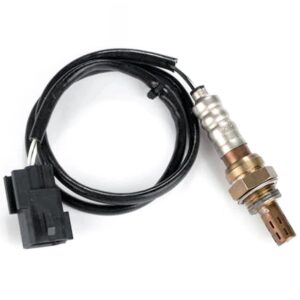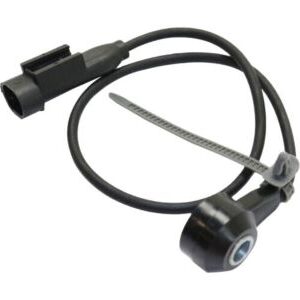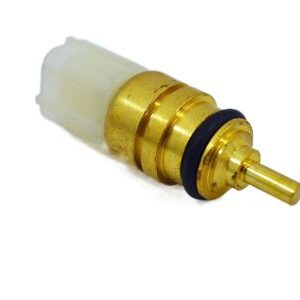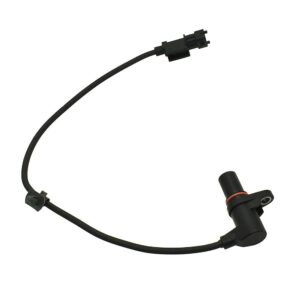Title: Unveiling the Oxygen Sensor: Your Vehicle’s Silent Guardian
Introduction:
In the intricate dance of combustion that powers your vehicle, there’s a silent observer quietly monitoring the composition of exhaust gases—the oxygen sensor. Often overlooked, this essential part plays a pivotal role in optimizing engine performance, fuel efficiency, and emissions control. In this blog, we’ll shine a spotlight on the oxygen sensor, exploring its function, importance, and how it contributes to the health of your vehicle and the environment.
What is an Oxygen Sensor?
The oxygen sensor, also known as the O2 sensor, is a critical component of your vehicle’s emissions control system. Positioned within the exhaust system, typically near the exhaust manifold or catalytic converter, this sensor measures the oxygen content in the exhaust gases and provides feedback to the engine control unit (ECU) or powertrain control module (PCM).
Functionality:
But how does the oxygen sensor work its magic? As exhaust gases flow past the sensor, it measures the oxygen content using a chemical reaction involving a zirconia or titania ceramic element. This generates a voltage signal that varies depending on the oxygen concentration in the exhaust stream. The ECU or PCM uses this data to adjust fuel delivery and optimize the air-fuel mixture for efficient combustion.
Importance:
The oxygen sensor plays a crucial role in optimizing engine performance, fuel efficiency, and emissions control. By continuously monitoring the oxygen content in the exhaust gases, the sensor enables the ECU or PCM to fine-tune fuel delivery and maintain the ideal air-fuel ratio for combustion. This not only improves engine performance and fuel economy but also reduces harmful emissions and ensures compliance with emissions regulations.
Common Symptoms of Oxygen Sensor Issues:
Like any component in your vehicle, the oxygen sensor may experience wear or failure over time. Common symptoms of oxygen sensor issues include:
1. Check Engine Light: A malfunctioning oxygen sensor may trigger the check engine light to illuminate on the dashboard, indicating a potential issue with the emissions control system.
2. Reduced Fuel Efficiency: Incorrect data from the oxygen sensor can lead to a rich or lean air-fuel mixture, resulting in reduced fuel efficiency and increased fuel consumption.
3. Poor Engine Performance: Improper fuel mixture due to a faulty oxygen sensor can cause rough idling, hesitation during acceleration, or decreased power output.
4. Failed Emissions Test: A malfunctioning oxygen sensor can result in increased emissions levels, leading to a failed emissions test or inspection.
Maintenance and Replacement:
Proper maintenance and timely replacement of the oxygen sensor are essential to ensure optimal engine performance and emissions control. If you experience any symptoms of oxygen sensor issues, it’s important to have your vehicle inspected by a qualified technician. They can diagnose the problem, replace the sensor if necessary, and perform any additional repairs to restore proper function.
Conclusion:
In conclusion, the oxygen sensor may be small in size, but its impact on your vehicle’s performance and environmental footprint is significant. By monitoring exhaust gases and providing feedback to the engine management system, this sensor helps optimize engine operation, improve fuel efficiency, and reduce harmful emissions. So, the next time you hit the road, take comfort in knowing that your vehicle’s silent guardian, the oxygen sensor, is working tirelessly to keep your engine running smoothly and responsibly.
In stock (can be backordered)
$37,904.62
Title: Unveiling the Oxygen Sensor: Your Vehicle’s Silent Guardian
Introduction:
In the intricate dance of combustion that powers your vehicle, there’s a silent observer quietly monitoring the composition of exhaust gases—the oxygen sensor. Often overlooked, this essential part plays a pivotal role in optimizing engine performance, fuel efficiency, and emissions control. In this blog, we’ll shine a spotlight on the oxygen sensor, exploring its function, importance, and how it contributes to the health of your vehicle and the environment.
What is an Oxygen Sensor?
The oxygen sensor, also known as the O2 sensor, is a critical component of your vehicle’s emissions control system. Positioned within the exhaust system, typically near the exhaust manifold or catalytic converter, this sensor measures the oxygen content in the exhaust gases and provides feedback to the engine control unit (ECU) or powertrain control module (PCM).
Functionality:
But how does the oxygen sensor work its magic? As exhaust gases flow past the sensor, it measures the oxygen content using a chemical reaction involving a zirconia or titania ceramic element. This generates a voltage signal that varies depending on the oxygen concentration in the exhaust stream. The ECU or PCM uses this data to adjust fuel delivery and optimize the air-fuel mixture for efficient combustion.
Importance:
The oxygen sensor plays a crucial role in optimizing engine performance, fuel efficiency, and emissions control. By continuously monitoring the oxygen content in the exhaust gases, the sensor enables the ECU or PCM to fine-tune fuel delivery and maintain the ideal air-fuel ratio for combustion. This not only improves engine performance and fuel economy but also reduces harmful emissions and ensures compliance with emissions regulations.
Common Symptoms of Oxygen Sensor Issues:
Like any component in your vehicle, the oxygen sensor may experience wear or failure over time. Common symptoms of oxygen sensor issues include:
1. Check Engine Light: A malfunctioning oxygen sensor may trigger the check engine light to illuminate on the dashboard, indicating a potential issue with the emissions control system.
2. Reduced Fuel Efficiency: Incorrect data from the oxygen sensor can lead to a rich or lean air-fuel mixture, resulting in reduced fuel efficiency and increased fuel consumption.
3. Poor Engine Performance: Improper fuel mixture due to a faulty oxygen sensor can cause rough idling, hesitation during acceleration, or decreased power output.
4. Failed Emissions Test: A malfunctioning oxygen sensor can result in increased emissions levels, leading to a failed emissions test or inspection.
Maintenance and Replacement:
Proper maintenance and timely replacement of the oxygen sensor are essential to ensure optimal engine performance and emissions control. If you experience any symptoms of oxygen sensor issues, it’s important to have your vehicle inspected by a qualified technician. They can diagnose the problem, replace the sensor if necessary, and perform any additional repairs to restore proper function.
Conclusion:
In conclusion, the oxygen sensor may be small in size, but its impact on your vehicle’s performance and environmental footprint is significant. By monitoring exhaust gases and providing feedback to the engine management system, this sensor helps optimize engine operation, improve fuel efficiency, and reduce harmful emissions. So, the next time you hit the road, take comfort in knowing that your vehicle’s silent guardian, the oxygen sensor, is working tirelessly to keep your engine running smoothly and responsibly.
| Warehouse | Inventory at warehouse 2 |
|---|




Get E-mail updates about our latest products and special offers.
Sensors and More is Jamaica’s ultimate online auto parts store. Established in 2020, we specialize in genuine electrical parts for Japanese, Read more…
Reviews
There are no reviews yet.